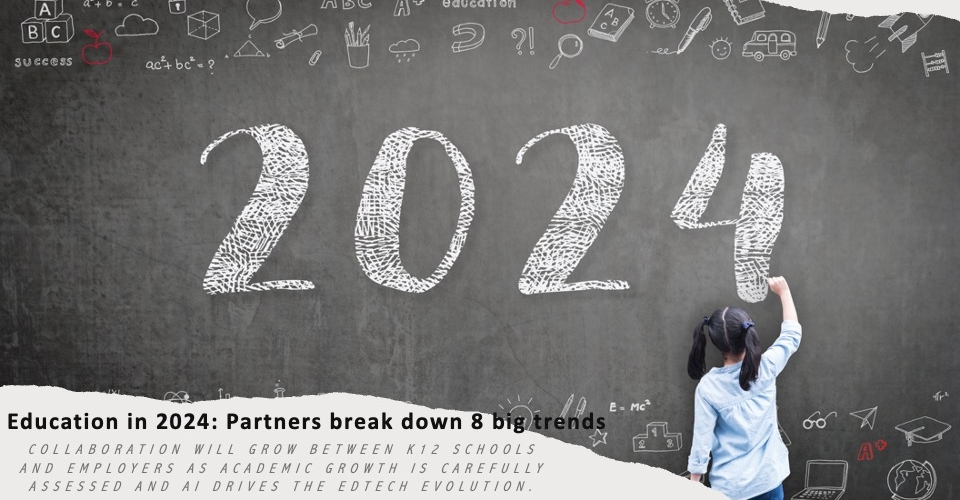“No surprises” is a mantra that has guided Superintendent Jim Chadwell’s relationships with his “bosses” on the school board in his 13 years at the helm of the Eagle Mountain-Saginaw Independent School District near Fort Worth, Texas. He strives to make sure board members have all of the information they need and that no one feels left out, he explains.
“I’ve made mistakes, but they’re going to hear about that mistake from me first and I am going to own up to it,” says Chadwell, a finalist for 2023 Texas Superintendent of the Year. “They need to feel like you’re being transparent and you’re holding yourself accountable first.”
Chadwell is not alone among experts in and outside the superintendency in naming constant communication as a bedrock principle for strong, productive school board relationships. Superintendents should develop their own comprehensive school board communication plan, adds Robert L. Long III, the division director for board development services at the Texas Association of School Boards.
“Know how board members like to receive information and how they want to interact one-on-one,” Long suggests. “The plan should be different with every board member, based on their communication style.”
A common mistake superintendents make is to avoid conflict among board members by turning their attention to “school work,” such as instructional issues and other campus problem-solving. But superintendents should be able to rely on members of their cabinet and other administrations to handle day-to-day operations.
“The superintendent’s primary focus is change,” Long continues. “With all the polarization and politicization, superintendents not only have to make sure the instructional, academic, and social-emotional needs of the student are met, they also need to make sure, working alongside the board, that every member understands they are there to care for kids.”
7 steps to better school board relationships
Here are several critical steps that Long and other experts say that superintendents must take to prevent turbulence with their school boards:
1. Social contracts. These lay out how board members and superintendents expect to be treated and establish procedures for resolving issues. “It’s incumbent on superintendents—they’re the community leaders for education and the education expert—to make sure guidelines and guardrails are up so members understand.”
2. Working with the board chair. The superintendent’s most important school board relationship is with the board’s chair, says Kelly Lyman, coordinator of the Executive Leadership Program at the University of Connecticut’s Neag School of Education. This can help create a culture in which board members understand their role is oversight, not management. “When I was a superintendent, my communication was primarily with the board chair, who brought to me board concerns, wanderings and feelings,” explains Lyman, who formerly led Mansfield Public Schools in Connecticut.
More from DA: The vaping crisis: Districts resort to dramatic measures, including indictments
3. Coaching.Superintendents should consider themselves guides, coaches and mentors to board members who likely have other jobs and may pick up “hearsay” or other inaccurate information out in the community, Long counsels. “Superintendents should be thoughtful and intentional in providing board members with all the information and also coach them throughout through the data without using too much education jargon.”
4. Setting a shared vision. Establishing a shared vision is an effective way for boards to hold superintendents accountable for advancing the district’s goals. “Those schools are the community’s schools,” Lyman points out. “You’re there to enact the wishes, hopes and dreams of the community. If the superintendent’s hopes and dreams and those of the community are not aligned, it may not be the right place for the superintendents.”
5. Understanding consensus. Superintendents and board members should define what consensus looks like, Long says. For example, does it mean 7-0 decisions or can it also be found in more narrowly divided votes? Long says.
6. Problem-solving partnerships. A misstep superintendents commonly make is trying to solve every problem on their own. They should reach out to school board members for assistance as well as to local government officials and other community leaders.
7. Meeting the candidates. During election seasons, Long recommends that the superintendent and school board president meet with candidates one at a time to cover members’ roles and responsibilities. This should include an ethics overview. “This provides a level of transparency in the community,” he notes. “This also provides candidates with a broad understanding of what they’re getting themselves into and the time commitment.”
Still, in large districts, superintendents have to be selective about how much information they provide to board members. Priority should be given to issues that are likely to cross board members’ paths and that will require decisions, Chadwell says. “I’m only as good as the board allows me to be,” he concludes. “I have to credit our board members for their support—it’s not blind support, it’s support based on facts, questions and a level of trust in judgment.”
District Administration’s Get on Board series allows superintendents and other experts to share ideas for creating and maintaining productive relationships with school board members.









